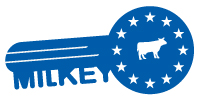Type of indicator
Quantitative
Relative dimension and aggregated criteria
Environmental sustainability: Agroecosystem biodiversity
Description
This indicator represents diversity and prominence of habitats at the farm level. The method used to estimate it is the Shannon Index (Shannon, 1948), which takes the value of zero if there is only one habitat on the farm (i.e., no diversity). The value increases as habitat richness increases. This indicator is adapted from Di Gregorio and Jansen (2000), Herzog et al., (2013), and Walz (2011).
The term “habitat” is defined as categories of habitats (e.g. forest, cropland, and wetlands). It is expected that higher diversity in habitats is strongly linked to a greater biodiversity. This indicator also covers unproductive areas (please see below the different categories). The following table describes all categories taken into account:
Indicator calculation
∑𝑖 [ (ℎ𝑎𝑏𝑖𝑡𝑎𝑡 𝑎𝑟𝑒𝑎 𝑖 / 𝑡𝑜𝑡𝑎𝑙 ℎ𝑎𝑏𝑖𝑡𝑎𝑡 𝑎𝑟𝑒𝑎 ) * (𝐿𝑛 (ℎ𝑎𝑏𝑖𝑡𝑎𝑡 𝑎𝑟𝑒𝑎 𝑖 / 𝑡𝑜𝑡𝑎𝑙 ℎ𝑎𝑏𝑖𝑡𝑎𝑡 𝑎𝑟𝑒𝑎) / 𝐿𝑛(2) ) ]
Where:
𝐻𝑎𝑏𝑖𝑡𝑎𝑡 𝑎𝑟𝑒𝑎𝑖 = Surface area of habitat i
𝑇𝑜𝑡𝑎𝑙 ℎ𝑎𝑏𝑖𝑡𝑎𝑡 𝑎𝑟𝑒𝑎 = Total surface of all habitats
| No. | Land Cover Class | Land Cover
Subclass |
Examples in this subclass |
| 1 | Cultivated and Managed
Terrestrial Areas (A11) |
Trees | Orchards, other tree plantations |
| 2. | Cultivated and Managed
Terrestrial Areas (A11) |
Shrubs | Plantations of dwarf trees, shrubs (also vineyard) |
| 3 | Cultivated and Managed
Terrestrial Areas (A11) |
Graminoids | Any grain grasses, maize, and cereal grasses |
| 4. | Cultivated and Managed
Terrestrial Areas (A11) |
Non-graminoids | Others (e.g. sunflowers, raps, any vegetables, herbs) |
| 5. | Natural and Semi-Natural
Terrestrial Vegetation (A12) |
Woody | Forests (managed and not
managed) |
| 6. | Natural and Semi-Natural
Terrestrial Vegetation (A12) |
Herbaceous | Grassland, meadow |
| 7. | Natural and Semi-Natural
Aquatic or Regularly Flooded Vegetation (A24) |
Woody | Swamps = forested wetland area along stream, river or lake
), bogs, flats |
| 8. | Natural and Semi-Natural Aquatic or Regularly Flooded Vegetation (A24) | Herbaceous | Marshes= wetland at the edges of lakes, streams, rivers
dominated by grasses, rushes or reedshere also wet meadows! mires, bogs, fens |
| 9. | Artificial Waterbodies, Snow and
Ice (B27) |
– | ponds, small water bodies,
channels |
Unit:
Score
Indicator interpretation
A lower value indicates lower biodiversity and is thus negatively associated with farm environmental sustainability.
Scale definition
Rating scale: The maximum value of the Shannon index is reached when all the habitats are all equally distributed through the farm area. In our assessment, the maximum of the Shannon index is 2.08.
| Reference values | Scales | Dexi interpretation | References | |
| Minimum Shannon
index (0) |
[1.4; 2.2] | High | + | Expert opinion |
| Maximum Shannon
index = 2,2 |
[0.7; 1.4] | Medium | ||
| <0.7 | Low | – | ||
References
Adapted from (Di Gregorio and Jansen, 2000; Herzog et al., 2013; Walz, 2011)
Di Gregorio, A., Jansen, L.J.M., 2000. Land Cover Classification System (LCCS). FAO, Rome. Drews, J., Czycholl, I., Krieter, J., 2020. A life cycle assessment study of dairy farms in Northern Germany I. Development of environmental impacts throughout a decade. ZUCHTUNGSKUNDE 92(4), 236-256.
Herzog, F., Jeanneret, P., Ammari, Y., Angelova, S., Arndorfer, M., Bailey, D., Balázs, K., Báldi, A., Bogers, M., Bunce, R.G., 2013. Measuring farmland biodiversity. Solutions 4(4), pp. 52-58.
Walz, U., 2011. Landscape structure, landscape metrics and biodiversity. Living reviews in landscape research 5(3), 1-35
